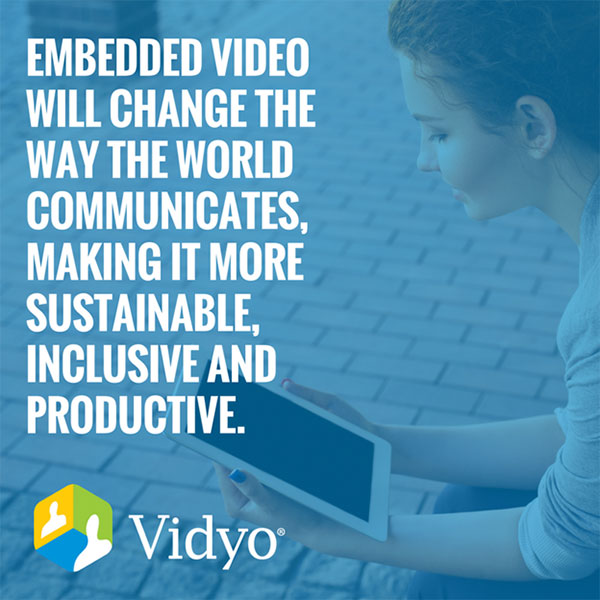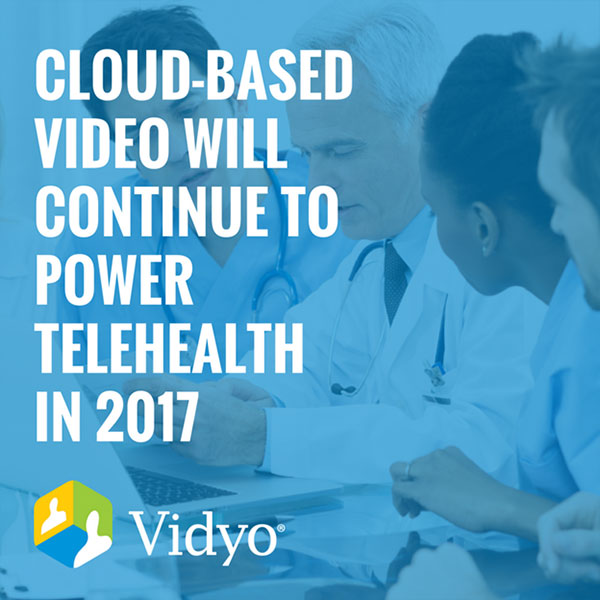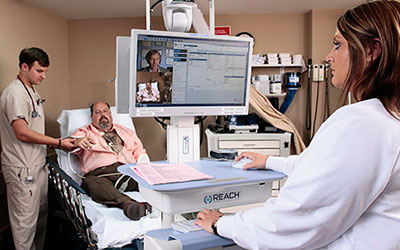As we kick off a new year, whether for our families, for the businesses we run or for society in general, it’s a good time to reflect on the future we want.
As of August 2016, the world population was estimated at 7.4 billion people, and counting. How can we make sure that the way the world communicates becomes more sustainable, inclusive and productive? At Vidyo, this is the challenge we are tackling as we head into 2017.

On top of that, across areas like healthcare, government and banking, we’ve also seen a universal need for more organizational transparency. Mobile, multiparty video chat is both revolutionizing – while simplifying – how we collaborate. Cloud-hosted, embedded video chat – that just works on anything – is the human element we need to make communication interpersonal again.
2016 was a pivotal and invigorating year for Vidyo that solidified for our team what really matters. Our cloud service, customer engagement, video-enabled contact centers, video banking and government business were all highlights of 2016, but when I reflect on this past year, I can’t help but think about the great work we have been doing in healthcare.
For more than six years, the non-profit Haiti Medical Education Project has relied on Vidyo for distance learning and emergency response training. This past October, when Hurricane Matthew struck the nation, we were humbly reminded once again that our mission to visually connect the world has only just begun. Using Vidyo, since the devastating earthquake that struck in 2010, more than 500 Haitian healthcare professionals and students, from five differents hospital and institutions, have accessed HME’s weekly lectures to create quality healthcare within Haiti – rather than having to depend on access from the outside world.
Their preparation for disaster response and mass emergency situations, such as a cholera outbreak, has improved over the years. In Haiti, due to infrastructure challenges, bandwidth can be low and wifi connections can be variable. When there is little margin for error, and time is of the essence, all kinds of teams around the world turn to Vidyo when quality matters.
This year proved that the role of telehealth is changing.
- In 2017, our team will continue to help make sure that more veterans and more nursing home residents get the high quality of care that they deserve, regardless of physical boundaries.
- I have personally had a family member suffer from a stroke, and I strongly believe that leveraging the power of telemedicine to help save the lives of more stroke victims is a game-changer.
- We will continue to help support mental health awareness and care through more telepsychiatry.
- Our technology, which is ideal for in-home prenatal care thanks to its reliability over personal networks and devices, will help expecting mothers and newborn children stay healthy and happy.
Telemedicine is ubiquitous, and our goal is for caregivers to use video throughout the continuum of care for all patient populations.

In a matter of days, a new Commander-in-Chief will officially take on his role in the Oval Office, who has promised to either “amend, repeal or replace” the Affordable Care Act that was established by President Obama in 2012. Assuming that there will be changes to our healthcare system, it’s important to remember that a passion for delivering quality care to the people who need it most, not money, is what drives doctors and medical professionals. They will always think first about how to best take care of their patients, and think of themselves second. That’s why, regardless of what changes the new administration makes, the rise of telehealth is enabling physicians to become flexible and adaptable under any circumstances. Most importantly, they see telemedicine as a way to do more with less – and save more lives.
Moving forward, the need for clinical efficiency will be de-politicized, because the ability to do more with less significantly benefits every stakeholder in and around our healthcare system. Across all industries, however, there are a few keys to unlock the true power of video chat.
As 2017 begins, we believe that for a future in which video chat becomes ingrained in everything we do, visual collaboration – among those who are both within and outside of your organization – means that quality over mobile really does matter, which is why we’re thinking ahead of the curve by working with projects like WebRTC and coding formats like VP9. Simple, mobile, multiparty video conferencing that works beautifully (even over low bandwidth connections and unpredictable wifi networks) is recreating the in-person, face-to-face experience across the globe. Most importantly, at scale, this empowers all stakeholders to more efficiently foster key personal relationships remotely – from anywhere, at any time – and on our own terms.
This year, IDC predicted that the U.S. video platform-as-a-service market is expected to grow from $44 million in 2016 to $1.7 billion by 2020, naming Vidyo a front runner in the market. Our vision for a video-enabled world is being swiftly realized through our vidyo.io developer platform. Now, any software developer – on any budget – can use our cloud-hosted APIs/SDK to easily embed immersive, resilient and elegant video chat into their mobile applications on virtually any device. Our video PaaS will let front-end developers around the world take advantage of the endless benefits of crystal-clear, beautiful, multiparty video chat, whether they’re building a startup, running an SMB or working within a large enterprise company or service provider.
It’s a new year, and we are looking forward to hitting more milestones on our mission to better connect the world by letting developers easily video-enable any concept or idea. Start building with vidyo.io here, or check out a free trial of our industry-leading VidyoCloud service here.
